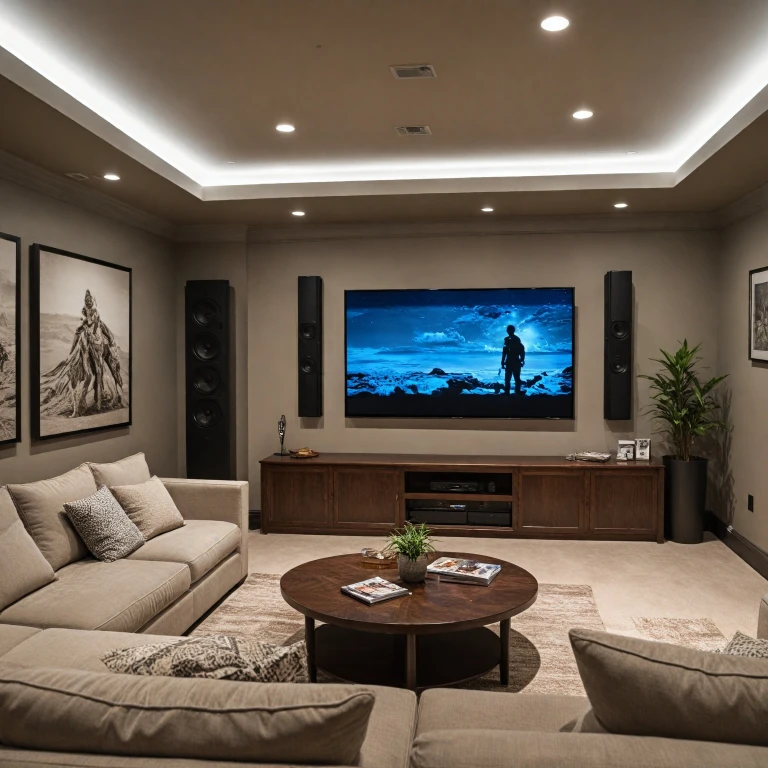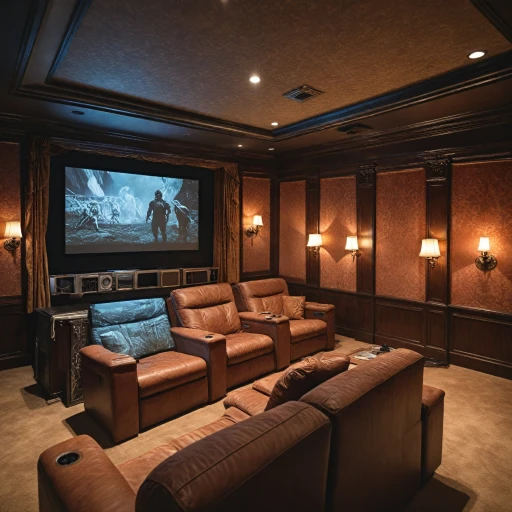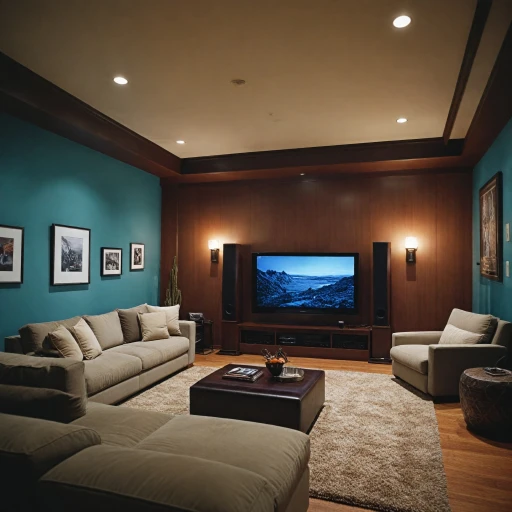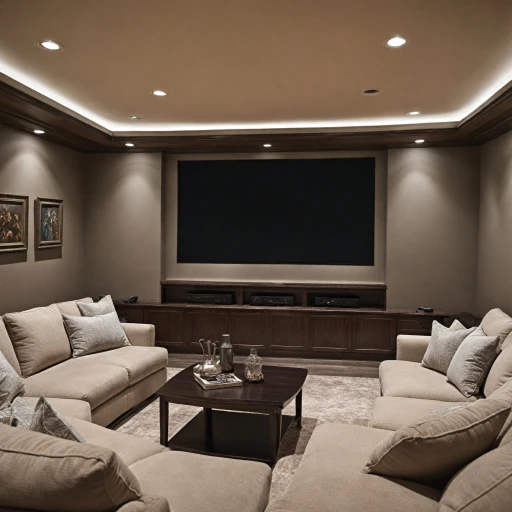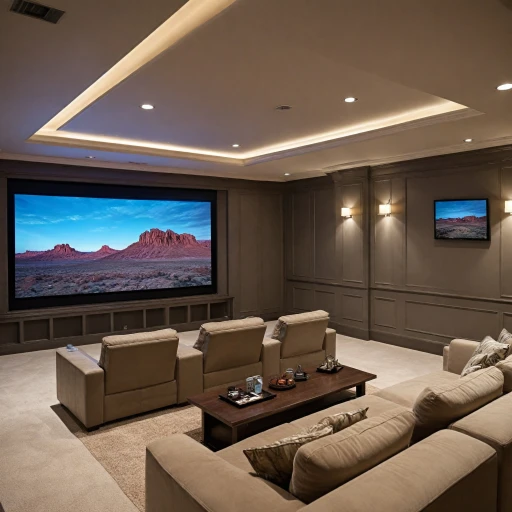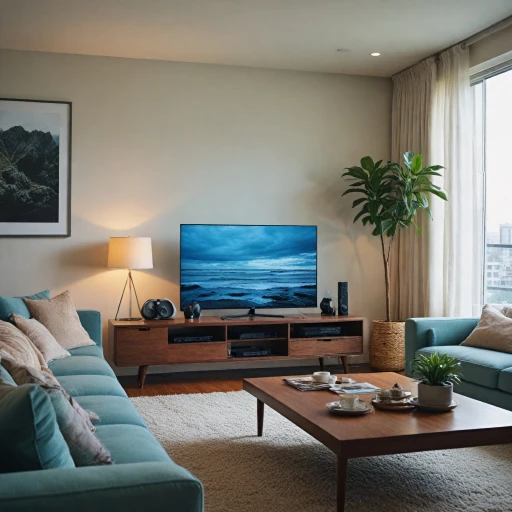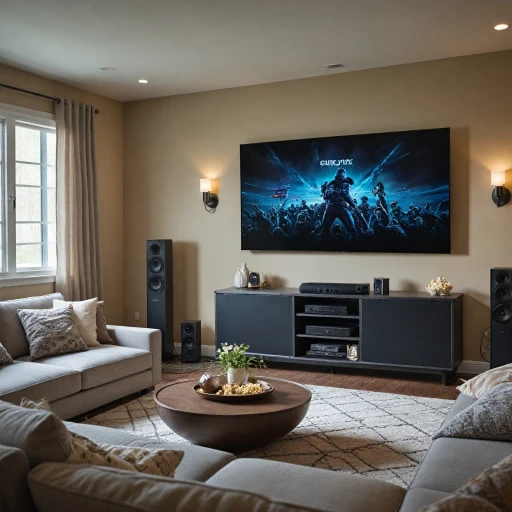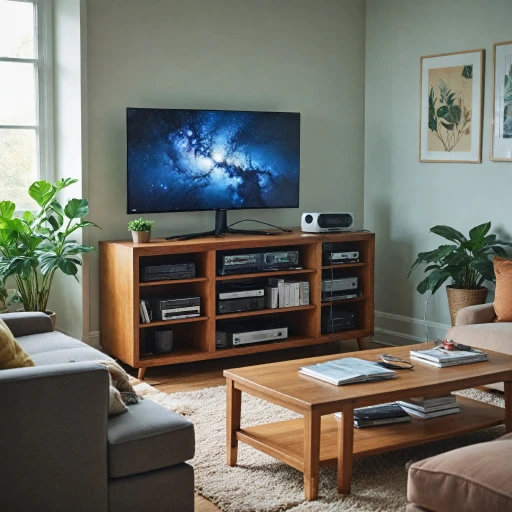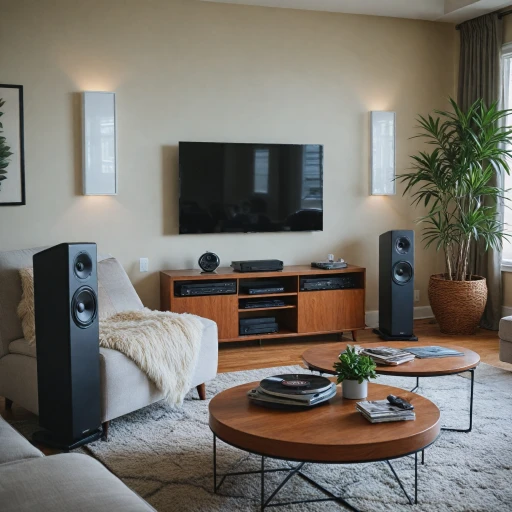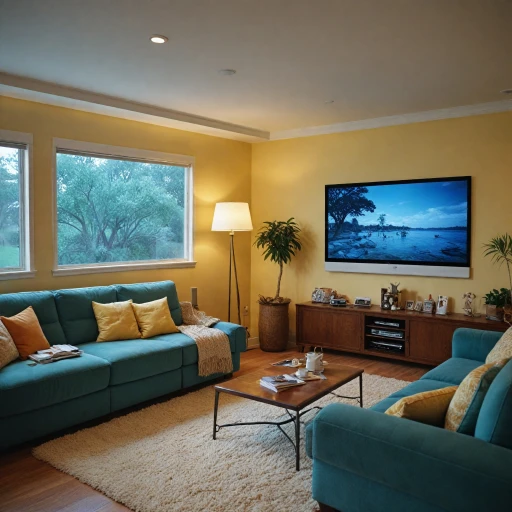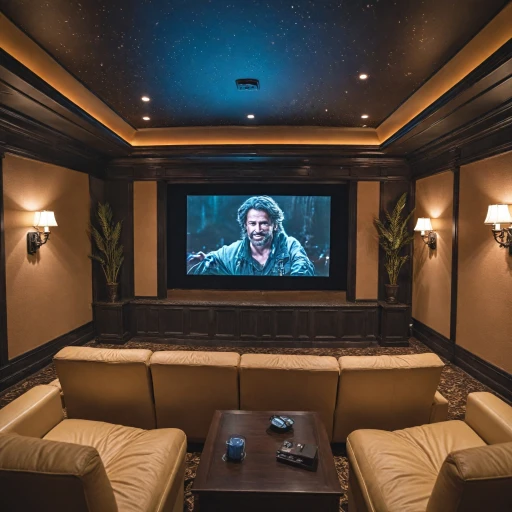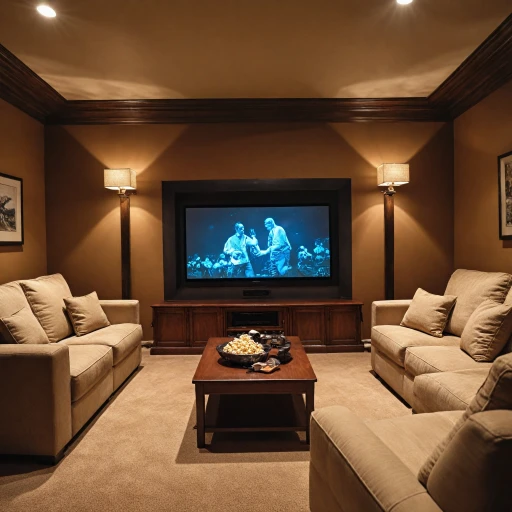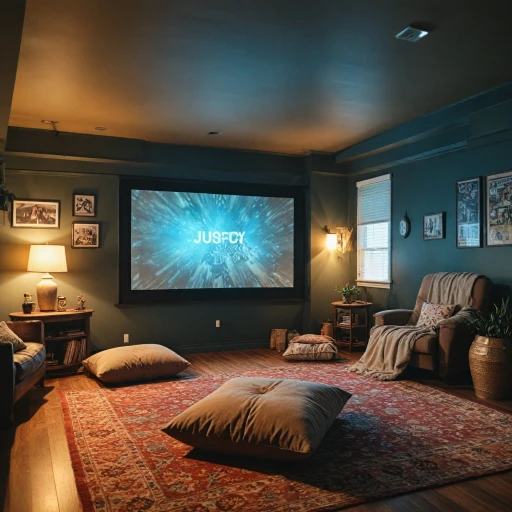
Understanding Screen Types
Exploring Different Screen Surfaces
When setting up a home theater, selecting the right screen is just as important as choosing the ideal projector. Screens come in various types, each designed to enhance the viewing experience by providing the best image quality based on different settings and uses. Fixed frame screens are a popular choice for permanent setups, offering a tensioned, wrinkle-free surface and commonly featuring a sable frame for aesthetic appeal. On the other hand, manual pull-down screens provide flexibility for spaces that need to accommodate other activities.
Projection screens can also be split by their surface materials, affecting image clarity and color reproduction. High-quality screen materials, like those from Elite Screens or the Silver Ticket series, often include a black backing to prevent light penetration and enhance contrast. Some users may prefer the silver or grey material of certain screens, as these can improve black levels in rooms with some ambient light. Consequently, identifying the right screen material can play a significant role in achieving that cinematic feel.
For those craving further exploration into the topic, choosing the ideal screen for your home theater can offer additional insights into making a well-informed decision.
Material Matters
The Importance of Selecting the Right Screen Material
When considering the screen material for your home theater, it’s crucial to understand its impact on the overall viewing experience. Screen materials play a significant role in the reproduction of colors and can affect the quality and brightness of the projected image. Different materials are designed to optimize picture quality under varying conditions. For instance, white material screens are highly popular due to their ability to deliver vibrant colors and high contrast. However, in rooms with ambient light, a gray screen might be more appropriate, as it enhances contrast while diminishing the washout effect often caused by light reflections. Some screen materials, like those offered by Elite Screens and Silver Ticket, come with special coatings to improve image quality. These coatings might include features like black backing or a matte finish, which reduces glare and enhances color fidelity. The Sable Frame series, for example, offers screens with superior black borders, helping to focus the viewer's attention and improve perceived image contrast. Moreover, the choice between a fixed frame and manual screens can also influence the selection of screen material. A fixed frame typically uses tensioned materials to maintain a perfectly flat surface, which results in a consistently sharp picture. This is especially important when the projector screen is used with high-definition projectors to deliver an HDTV-quality viewing experience. For those who prefer versatility, EPV screens provide a balance by offering easy set-up options that maintain good image quality across various setups. As a part of installation and maintenance considerations, ensuring your screen is made from durable material will not only improve visual performance but also ensure longevity and reduce the need for frequent replacements. Material selection should align with both your viewing environment and the projector's characteristics to truly maximize the home theater experience. For more detailed guidance on securing your projector screen to your room structure, you might want to learn how to secure a mechanical projector screen to a drop ceiling.Size and Aspect Ratio
Finding the Right Screen Dimensions
Choosing the correct size and aspect ratio for your home theater screen can make a significant impact on your viewing experience. The size of the screen, often referred to as the diagonal measurement, is an essential factor in ensuring you strike a balance between immersion and practicality.- Balancing Screen Size and Room Dimensions
- Large screens offer better immersion, but make sure the screen doesn't overpower your room size. A good rule of thumb is
- Consider the "Sweet Spot" for viewing distance: A 110-inch diagonal screen is popular for medium to large home theaters,
- Understanding Aspect Ratios
- Aspect ratio refers to the relationship between the width and height of the screen. Common options include 16:9, ideal for
- For those investing in widescreen cinema experiences, 2.35:1 allows for a more cinematic look, commonly supported by
- Selecting the Appropriate Frame and Screen
- Opt for fixed frame screens for a neat, professional look with materials such as "Sable Frame" or "Elite ProAV".
- If flexibility is key, consider a manual or electric retractable screen solution. Brands like "EPV Screens" provide options
Gain and Viewing Angle
Optimizing Your Viewing Experience with Proper Gain and Viewing Angle
Selecting the right projection screen involves understanding two critical factors: gain and viewing angle. These aspects directly influence how well your home theater projector will perform, ensuring top-notch image quality and overall viewing satisfaction. Gain refers to the screen's ability to reflect light back towards the audience. Screens with higher gain tend to be brighter, which is beneficial in rooms with higher ambient light. A white material can often enhance this effect, offering a good job in terms of brightness. However, screens with very high gain may result in a narrow viewing angle, causing potential color distortion when viewed from the side. Conversely, screens designed with a wider viewing angle provide a more consistent color and quality from different seating positions. This makes them suitable for larger groups and varied seating arrangements, allowing everyone a good view of the silver ticket, so to speak. There are versatile options available in the market, from the reliable manual screens of Elite Screens to the fixed frame options like the Elite ProAV series. Each offers different gains and viewing angles, designed to fit distinct needs and setups. One must also consider how well a screen's chosen materials, such as the sable frame or black backing, align with the overall purpose. For instance, a fixed frame screen with a silver material might provide excellent reflectivity in well-controlled lighting environments. By diligently balancing gain and viewing angle, and selecting the right combination of screen materials, you're on track to achieving an immersive home theater experience that truly enhances your projector's capabilities.Ambient Light Considerations
Handling Ambient Light
When setting up your home theater, ambient light is a pivotal factor that directly impacts your viewing experience. As you select your ideal projector screen, understanding how different screens manage ambient light can make a good start towards achieving superb image quality. Some screens come with special materials designed to reject ambient light, ensuring that the projected image remains crisp and vibrant. For instance, screens with a grey or silver surface are known for enhancing contrast, making them a solid choice for rooms that cannot completely block out light. Silver Ticket and Elite Screens offer a range of options that cater to this specific need. On the contrary, white screens generally deliver excellent brightness, but they usually require a controlled lighting environment to prevent washed-out images. Screen gain and viewing angle are also worth considering when thinking about ambient light. A high-gain screen reflects more light towards the viewer, making it great for brighter room settings. However, a screen with a high gain tends to have a narrower viewing angle, limiting the audience range. Opting for a balance between gain and viewing angle ensures that you strike a compromise between good light rejection and wide visibility. Moreover, the installation of black backing on fixed frame screens or using screens manual that include a black border enhances perceived contrast by reducing the halo effect around the image edges, thereby reinforcing quality. The Elite ProAV and EPV Screens offer some of the best options for this kind of configuration. In the end, understanding the impact of ambient light and how to address it with the right screen choices will do a good job in optimizing your home theater experience. Whether you choose fixed frames, like the Sable Frame Series, or screens manual options, ensure they align with your room conditions to preserve the integrity of the colors and overall image quality.Installation and Maintenance Tips
Tips for Setup and Care
When you've secured your desired screen, whether it's a silver ticket, elite proav, or any other projector screen, proper installation and maintenance are crucial to achieving and maintaining optimal performance. While the choices in screen materials, like screens sable or white material, play a vital role in image quality, installation and upkeep make a significant difference.- Installation Location: The position of your projection screen in relation to the projector can significantly impact viewing experience. A fixed frame, like those made with elite frames, generally provides a stable image quality. Ensure that your screen installation allows for a good job of covering potential light leaks with a black backing.
- Mount Considerations: Whether you opt for a wall or ceiling mount, the stability of the mount can influence the quality of the projection. A sturdy fixture, such as epv screens fixed frame screens, often results in less image vibration.
- Maintenance Routine: Regular cleaning and maintenance ensure the longevity of your screen. For white materials and sable frame screens, use a microfiber cloth to gently wipe down the surface. Avoid harsh cleaners that might damage the screen material.
- Light Control: Ambient light considerations you made earlier still matter post-installation. Utilize blackout shades or curtains if necessary, to minimize light interference, maintaining the high image quality you desire.
- Screen Adjustments: If your setup includes screens manual adjustments, ensure they are calibrated for your dedicated viewing environment. Adjustments should be minimal with fixed frame or projection screen types, maintaining your screen high.
- Replacement Parts: Although a sable frame or silver ticket frame is durable, keep an eye on any wear and tear. Replacement parts for elite screens or any preferred brand can extend the life of your home theater setup.
